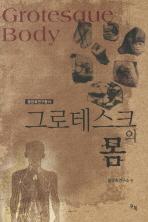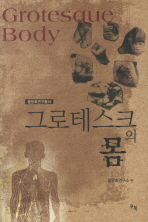- 글번호
- 910353
Grotesque Body
- Writer
- 몸문화연구소
- View
- 61
- Date
- 2018.06.01
- 수정일
- 2024.04.03


Series Book – Grotesque Body
In classical aesthetics, beauty has been admired as being good, and ugliness has been criticized
as evil: especially in modern society, where ‘lookism’ is prevalent, it stands on the contrary to beauty.
Thus, through the series book Grotesque Body, the Institute of Body and Culture seeks a counter-
discourse on the appearance-centered reality where ugliness is only to be excluded, while suggesting
a new set of aesthetic principles focusing on 'grotesque'.
As follows, the main text of Grotesque Body is comprised of 3 parts. In part 1, which deals with the
theoretical work on the concept of grotesque, we explore the position, value, and meaning of grotesques
from the perspectives of philosophy, feminism, and psychoanalysis, respectively. Part 2, which examines
the flow of grotesque from a historical and cultural research perspective, places in its center of the
discussion pansori of the Ijo era, colonial discourse that denies grotesque as the other, "a body that
is positive" ideology after Korean liberation of 50s that excluded the wounded bodies of soldiers, and
finally the body of a modern woman. In Part 3, lastly, the book attempts to answer questions about
how grotesques are reproduced in literature, art, and philosophical discourse, and how grotesques
are then arranged in the terrain of the future.
In classical aesthetics, beauty has been admired as being good, and ugliness has been criticized
as evil: especially in modern society, where ‘lookism’ is prevalent, it stands on the contrary to beauty.
Thus, through the series book Grotesque Body, the Institute of Body and Culture seeks a counter-
discourse on the appearance-centered reality where ugliness is only to be excluded, while suggesting
a new set of aesthetic principles focusing on 'grotesque'.
As follows, the main text of Grotesque Body is comprised of 3 parts. In part 1, which deals with the
theoretical work on the concept of grotesque, we explore the position, value, and meaning of grotesques
from the perspectives of philosophy, feminism, and psychoanalysis, respectively. Part 2, which examines
the flow of grotesque from a historical and cultural research perspective, places in its center of the
discussion pansori of the Ijo era, colonial discourse that denies grotesque as the other, "a body that
is positive" ideology after Korean liberation of 50s that excluded the wounded bodies of soldiers, and
finally the body of a modern woman. In Part 3, lastly, the book attempts to answer questions about
how grotesques are reproduced in literature, art, and philosophical discourse, and how grotesques
are then arranged in the terrain of the future.